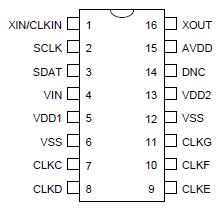CY24488: Features: •Three output frequencies plus reference out•Programmable output frequencies via I2C serial interface•Output frequencies from 4.9152 to 148.5 MHz•Uses an external 2...
floor Price/Ceiling Price
- Part Number:
- CY24488
- Supply Ability:
- 5000
Price Break
- Qty
- 1~5000
- Unit Price
- Negotiable
- Processing time
- 15 Days
SeekIC Buyer Protection PLUS - newly updated for 2013!
- Escrow Protection.
- Guaranteed refunds.
- Secure payments.
- Learn more >>
Month Sales
268 Transactions
Payment Methods
All payment methods are secure and covered by SeekIC Buyer Protection PLUS.

 CY24488 Data Sheet
CY24488 Data Sheet







